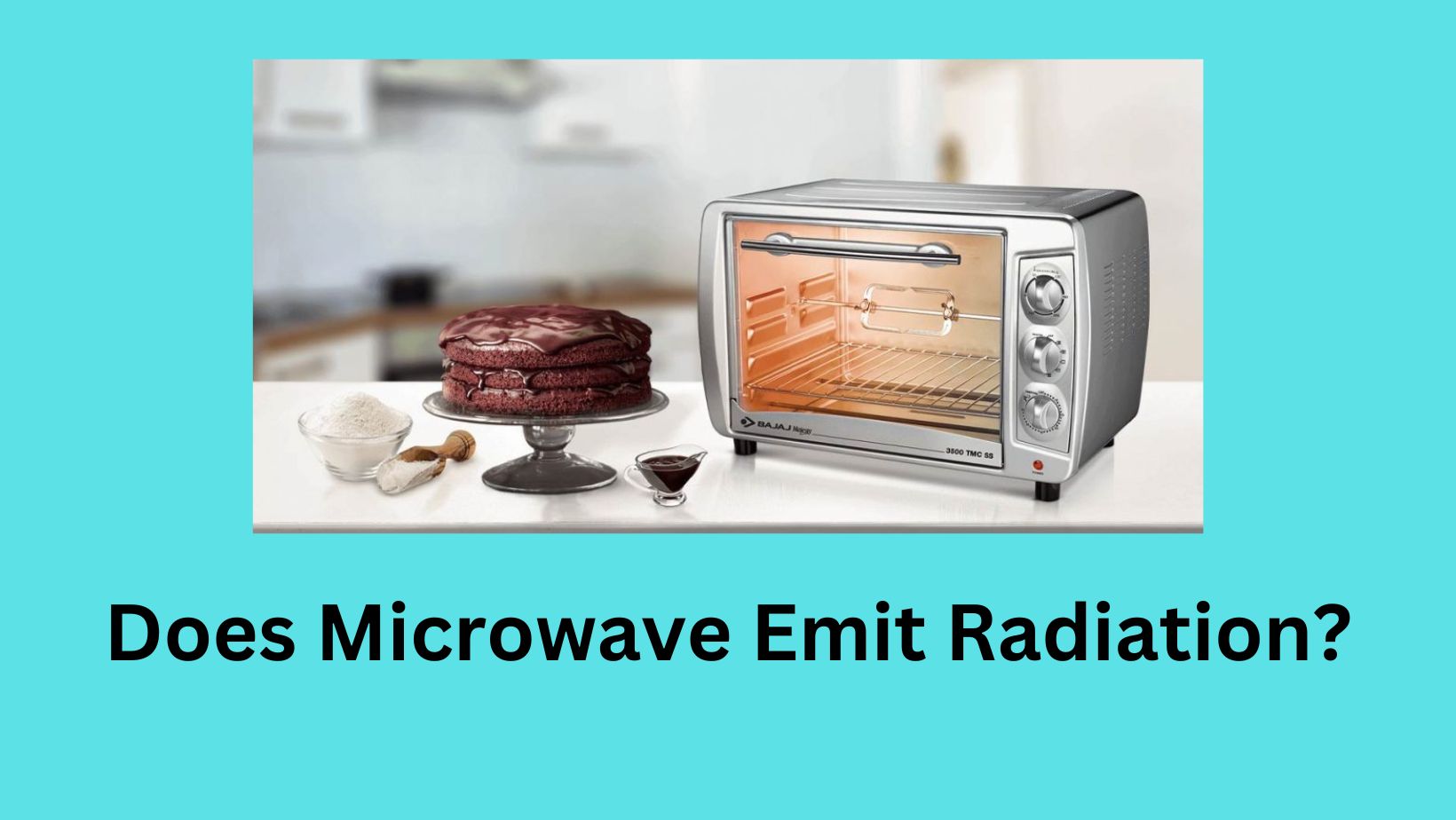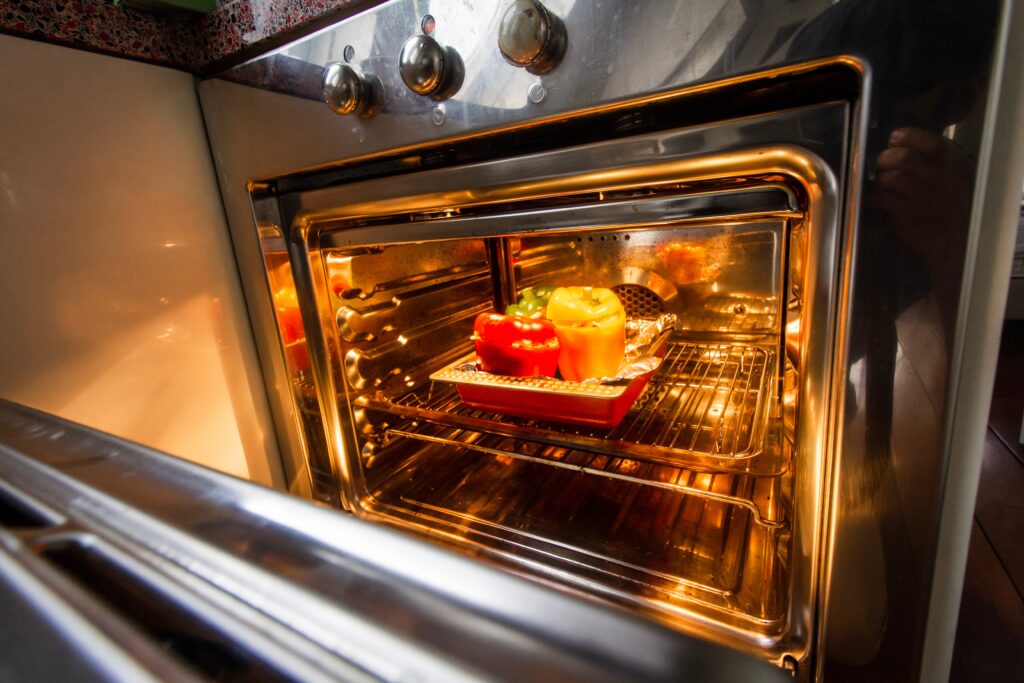Does Microwave Emit Radiation?

Dear reader, if you purchase through links on our site, we may earn a small affiliate commission to help support the blog - at no extra cost to you. And it never influences our product selection process. Thank you!
Microwaves are everywhere these days. From microwaving food at home to using them in our cars, they seem to be part of everyday life. But do microwaves really cause cancer?
Microwave ovens heat food by sending out electromagnetic waves through water molecules inside the food. The frequency of the waves varies from 2.45 GHz to 2450 MHz. These frequencies are absorbed by water molecules and converted into thermal energy. This causes the water molecules to vibrate and produce heat.
There has been much debate over whether or not microwaves pose health risks. Some studies suggest that microwaved foods contain carcinogens, while other studies show no evidence of harm. There is also some concern that microwaves may interfere with cell phone signals.
Does radiation from microwaves cause cancer?
Here are many different types of radiation that have different levels of energy. X-ray rays have lots of energy and may break DNA. This is called ionizing radiation and, if exposed to it over time, can contribute to cancer risk.
Microwaves, radio waves, and visible light are all examples of non-ionizing radiation. Only Ultraviolet (UV) light is known to cause cancer. Microwaves do not cause cancer.
What is Microwave Radiation?
Microwaves are electromagnetic waves that travel through space. They are also known as radio waves because they were originally discovered by scientists who studied radio transmissions. These waves are invisible to the naked eye, but we know about them because they interact with certain substances. For example, if you put your hand near a magnet, you’ll feel a slight tingling sensation. That’s because the magnet interacts with the electric charge inside your body. Similarly, when you eat food, the microwaves emitted by the oven interact with the food. When these interactions occur, the microwaves change into heat.
Cooking with Microwaves
Microwave ovens work by heating objects through electromagnetic radiation. They do so by converting electrical power into radio waves, which then interact with the object being heated. These interactions produce heat, which causes the object to warm up.
Although heat is produced in the food itself, conventional ovens do not cook the food from the inside out. When thick foods are cooked in an oven, the outside is heated and cooked primarily by convection currents caused by air circulating around the food. The inner parts of the food remain relatively cold because they are surrounded by hotter material. In contrast, microwave ovens heat the food from the inside outward. Because the interior of the food remains cooler than the exterior, the food cooks faster. Microwave cooking also causes water molecules to vibrate rapidly, producing steam. This steam fills the void between the food particles, creating a moist environment that prevents drying out during cooking.
Microwave cooking is an effective method of preparing meals because it cooks food rapidly and evenly. Foods do not lose nutrients during microwave cooking; however, certain types of plastics (such as polystyrene) can melt if placed directly into a microwave oven. Metal utensils should not be used in microwave cooking because they reflect microwaves back onto the food being prepared. Most microwave ovens include specific directions about what type of container to use. These directions also tell users how to check containers to determine whether or not they can safely be used in a microwave.

Avoiding Injuries from Super-Heated Water in Microwave Ovens
The FDA received reports of serious skin burns or blisters around people’s hands and faces as a result of hot liquid erupting out of a mug after it was heated in a microwave oven. Water heated beyond its boiling point (212°F/100°C) doesn’t appear to be boiling and can occur if water is heated alone in a clean cup. When water is heated above 212°F/100° C, a slight disturbance or motion such as stirring or shaking the cup could cause a sudden explosion of boiling water. Adding substances such as coffee or sugar before heating reduces the risk of this happening.
Microwave ovens can be dangerous if used improperly. Follow the instructions given in the manual carefully. Do not leave food inside the microwave oven after cooking. Make sure that the door is closed tightly before turning off the power supply. Never place any metal objects into the microwave oven.
Microwave ovens can be dangerous if used improperly. Follow the instructions given in the manual carefully. Do not leave food inside the microwave oven after cooking. Make sure that the door is closed tightly before turning off the power supply. Never place any metal objects into the microwave oven.
Microwave Oven Safety Standard
Through its Center for Device Radiation Safety (CDRS), the FDA sets and regulates standards of safety for consumer electronics devices to ensure that they do not cause any adverse effects on human health.
A federal regulation (21 CFR 1030) limits the amount of radio frequency (RF) radiation emitted by household appliances such as televisions, computers, cell phones, cordless telephones, wireless routers, and Wi-Fi access points to five watts per kilogram (5 W/kg). This limit is much lower than the levels known to cause cancer or genetic damage. RF radiation decreases rapidly as you get farther away from the source of the radiation. For example, a measurement taken 20 inches from a television set would be about one hundred times smaller than the value measured at two inches from the TV.
The standard also requires that all ovens be equipped with two independent interlocks that prevent the oven from operating if either fails. A monitoring system prevents oven operation if either interlock fails.
All ovens must have labels indicating whether they comply with the safety standards. In addition, the Food and Drug Administration (FDA) requires that all ovens carry warnings about safe usage. Manufacturers can prove that an oven meets the safety standard without labeling if they show that the oven would not exceed the allowed leakage level even if used under the recommended conditions.
To ensure compliance, the FDA conducts its own lab tests on ovens before they go into commercial production. The agency also inspects manufacturing facilities to verify that companies follow proper procedures.
Microwave Ovens and Health
Microwave radiation cannot heat body tissues the same way it heats foods. Exposure to high levels does not cause pain or injury. However, if you do get burned, your eyes may hurt and you might develop cataracts. These effects occur after prolonged exposure to very high levels of microwaves.
Have Radiation Injuries Resulted from Microwave Ovens?
Most injuries related to microwaves are the result of heat-related burns from hot containers, overcooked food, or exploding liquids. These types of injuries are not radiation related. That said, there are very rare cases where radiation-related injuries occur due to unusual circumstances or poor service. In general, microwave radiation injuries are caused by excessive exposure to microwave radiation leaking through openings in the microwave oven seals (e.g., door gaskets). However, FDA regulations require manufacturers to design microwave ovens to prevent these high levels of leakage.
Microwave Ovens and Pacemakers
At one time there were fears that radiation leakage from microwave appliances might interfere with certain electronic heart pacemakers. Similar fears were also expressed about pacemaker interference from hair dryers, car ignitions, and other electronic devices. Although the Food and Drug Administration (FDA) does not specifically require microwave appliances to carry warning labels for people with pacemaking devices, these problems have largely been resolved as today’s pacemakers are designed so that they can withstand such electrical interference. Patients with pacemakers should however consult their doctors if they have any doubts.
Checking Ovens for Leakage and Other Radiation Safety Problems
Microwave ovens can leak radiation into food, so it’s important to keep them clean and check regularly for any signs of damage. Don’t use an oven if the door won’t shut properly, or if it appears to be warped or cracked.
The FDA also monitors food products for radiation safety issues and receives reports of microwave ovens that may remain on and operate while the door is open, emitting potentially harmful levels of radiation. When operating as designed, microwave ovens have safeguards to prevent them from generating microwaves if the door remains closed. However, if an appliance continues to operate with the door opened, consumers cannot be certain that no radiation is being emitted. Therefore, if this occurs, consumers should immediately stop using the product.
How to Report Microwave Oven Radiation Safety Problems
If you suspect a health hazard with your microwave oven, call the manufacturer. Manufacturers who find that any microwaves they produce, assemble, or import does not meet federal standards must immediately notify the Food and Drug Administration. They also must report all incidents involving radiation exposure to the FDA, unless those exposures were caused by defects or violations that had already been reported.
You may also report radiation-related problems or injuries
Tips on Safe Microwave Oven Operation
Follow the manufacturer’s instructions for the safe operation of your oven.
- Use microwave-safe cookware especially made for use in the microwave.
- Do not operate a microwave oven if its door does not close tightly or is warped, bent, or otherwise damaged.
- Stop using a microwave if it continues to work with the door closed.
- Don’t let your child stand near an open flame for too long.
- Do not heat water in the microwave oven longer than recommended in the manufacturer‘s instruction manual.
- Some ovens should only be used when they’re full. Check the instructions before operating an empty oven.
Cleaning your microwave oven can be easy if you follow these tips. First, make sure the inside of your microwave is completely dry before cleaning. Next, wipe down any areas that may get sticky, such as the door handle and the interior walls. Finally, remove any food particles stuck to the bottom of the oven. You should also check the filter every once in a while to ensure it is working properly.
Final thought
Microwave ovens use electromagnetic waves to cook food. These waves are used to heat up water molecules inside the food so that they vibrate faster and thus create friction which cooks the food. The microwaves emitted by the microwave oven are extremely small and harmless. They cannot cause harm to humans. However, there are certain precautions that one must take while using a microwave oven. One must ensure that the door of the microwave is closed properly before heating food. Also, one must avoid placing metal objects near the microwave.
- Best 3 Air Fryer And Microwave Combo - September 22, 2024
- Kitchen Knives - May 3, 2024
- Top 10 Best kitchen egg cooker [High Quality] - May 3, 2024
